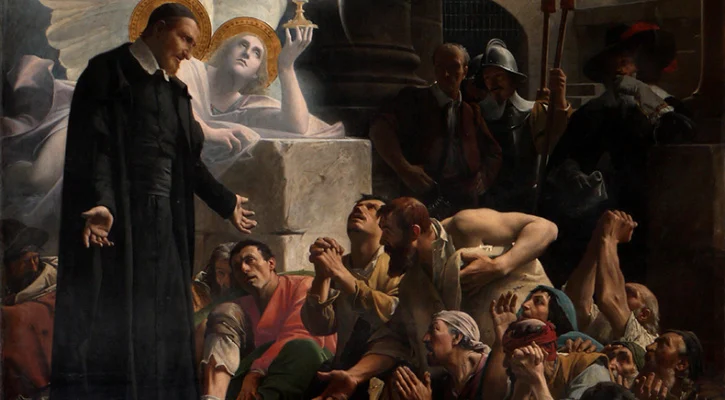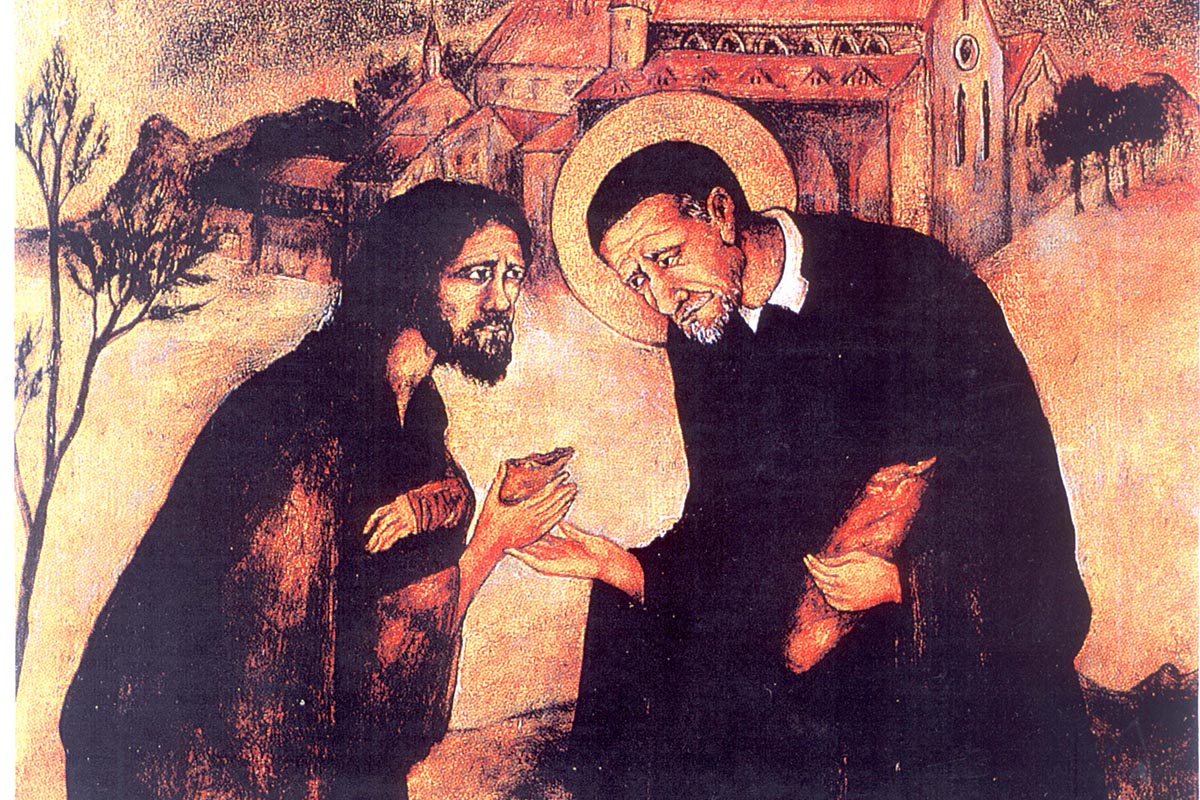(This is an excerpt of the paper the author delivered at University of Toronto (Canada) for a research project entitled “The Metaphysics of Contemplation: Religious Life as Form of Thought” on March 22 – 25, 2023, in Regis College – Jesuit School of Theology.)
CONTEMPLATION AND PRAXIS: PHILOSOPHY
The contemplative-active binary which has plagued Western thinking for centuries can be traced to Pythagoras’ distinction between three types of people attending the Greek festival games — those who sell goods, those who compete in the games, and those who watch the game (“theoros”).
Plato discarded the merchants, and came up with the two lifestyles, enthroning contemplation (and the life of the philosopher) as the human ideal.
In Nicomachean Ethics, Aristotle took up the position of his mentor and theorized on the so-called “contemplative ideal” within his framework. In Aristotle, there is a direct correlation between the contemplation and eudaimonia (happiness or well-being): “Happiness extends then just so far as contemplation does, and those who whom contemplation more fully belongs are more truly happy. Happiness then must be some form of contemplation” (NE 10.)
But this dominant Aristotelian position is at best contradictory since NE is Aristotle’s wager on how to live the citizen’s active ethical life in the context of the polis. Endless philosophical debates were spent mainly on this point. Some philosophers in fact point to the activist ideal of eudaimonia and the primacy of praxis (not theoria). Others point to the so-called function argument in NE 1.7-8: “As in the Olympian games, it is not the most beautiful and the strongest that are crowned but those who compete, so those who act rightly win the noble and the good things in life.”
In the end, philosophy or contemplation is itself “praxis”, an eupraxia or acting well. Aristotle states in Politics 7.3: ”If we are right in our view, and happiness is assumed to be acting well, the active life will be the best, both for every city collectively and for individuals… the end is to do well [even for thoughts and contemplations which are independent and complete in themselves], and therefore a certain kind of action” (Politics 7.3).
MARY-MARTHA BINARY: CHRISTIAN THEOLOGY
But the history of mysticism followed the dominant “contemplative ideal” as it transposed the Greek philosophical debate to the Christian tradition via the biblical account of Mary and Martha — the earlier having chosen the best part, and the latter being reprimanded for being a busybody (Luke 10: 38-42). Vita contemplativa (devotion to and desire for a vision of God) and vita activa (love and service of neighbor) were seen as two necessary dimensions of Christian life. How they relate to each other depends on which paradigm and epoch one lives his/her Christian calling.
To some, the contemplative life is the more desirable Christian ideal, while the active life is only obligatory and necessary in this part of earthly divide. In the heavenly kingdom, we do not need to acts of mercy; we only contemplate God in the “lumen gloriae”. Thus, on this earth, there is a need to swing from one dimension to the other as hinted in the expression, “contemplare et contemplata aliis tradere” (Thomas Aquinas). Some mystics are against this oscillation as it still privileges contemplative ideal. They argue for a fusion of both on a higher level where one can live active lives contemplatively, that is, “contemplatives in action” (Ignatius of Loyola).
VITA CONTEMPLATIVA AND VITA ACTIVA: MYSTICAL TRADITIONS
These two directions can be clearly seen in two differing interpretations of the Mary-Martha narrative within the mystical tradition itself. On the one hand, The Cloud of Unknowing talks about three stages of Christian life: (a) a Christian active in corporal works of mercy like Martha; (b) a Christian entering into contemplation and oscillates between the two; c) a Christian entering the “cloud of unknowing”. “The first stage is good; the second is better; but the third is the best of all” like Mary who has chosen the best part.
On the other hand, Meister Eckhart thinks that Martha “stood maturely and well-grounded in virtue, with untroubled mind, not hindered by things, and so she wished her sister to be equally established, for she saw she was not grounded in her being.” One thing is needful and “that one is God”. Eckhart argues: “Some people hope to reach a point where they are free of work. I say this cannot be.” Martha has already been laboring in God’s vineyard; while Mary is still learning at the feet of the Lord. And when the Lord has gone up to heaven, only then that Mary began to serve: “she travelled overseas and preached and taught, acting as a servant and washerwoman to the disciples. Only when the saints become saints do they do good works… For this we find evidence in Christ. From the beginning when God began man [sic] and man become God, he began to work for our salvation, right to the end, when he died on the cross.”

VINCENT AND CHARITY, MYSTICISM OF ACTION
For Meister Eckhart as for Vincent de Paul, God is action, liberating action. It is God’s infinite love poured into creation that makes creation exist and subsist. God’s action sustains us: “God toils with each individual: with the craftsman in his shop, with the woman in her household, with the ant and bee,” St. Vincent says. And since Jesus is the face of God, he is the ultimate and final criterion of any right action. The CM Common Rules starts with this sentence: “Our Lord, Jesus Christ, sent on earth for the salvation of the human race, did not begin by teaching, he began by doing (CR, 1).
A famous quotation from Vincent de Paul, read at the Office of Readings on September 27 (his feast day), integrates our reflections. St. Vincent places love (or charity) at the center of Christian vocation: “Charity is certainly greater than any rule. Moreover, all rules must lead to charity.” And, as it is in the gospels, love is one — there is no dichotomy between the love of God and love of the neighbor, between prayer and praxis, between contemplation and action so much so that Vincent can tell his followers: “you can leave God for God”.
“It is our duty to prefer the service of the poor to everything else and to offer such service as quickly as possible. If a needy person requires medicine or other help during prayer time, do whatever has to be done with peace of mind. Offer the deed to God as your prayer. Do not become upset or feel guilty because you interrupted your prayer to serve the poor. God is not neglected if you leave him for such service. One of God’s works is merely interrupted so that another can be carried out. So when you leave prayer to serve some poor person, remember that this very service is performed for God.”
“Charity is certainly greater than any rule. Moreover, all rules must lead to charity. Since she is a noble mistress, we must do whatever she commands. With renewed devotion, then, we must serve the poor, especially outcasts and beggars. They have been given to us as our masters and patrons.”
Further, charity (or love) which is beyond all rules, in the end, was used by Vincent de Paul to deconstruct the usual metaphysical distinctions between the subject and object, benefactor and beneficiary, the giver and the recipient. In Vincent de Paul, the beggars become our masters and patrons, and we their servants.
EXPLODING THE BINARIES: VINCENT AND THE BEGGAR
I would like to end with a contemporary painting of Vincent de Paul entitled “St. Vincent and the Beggar” done by Meltem Aktas now found in the Rosati House in Chicago. A Vincentian, Louis Brusati, gave this observation:
“St. Vincent is the person who hands bread to people. Here he looks at the bread. But no one can say whether he is the one giving it or asking for it. Look at Vincent’s left foot. He has always been limping the whole of his life. In fact, this limping foot matches the deformed hands of the beggar. Only when we realize our own pain can we recognize the pain in the beggar. Only when we realize our being estranged can we recognize the stranger.”
It is the beggar and his gaze that defines our being. As a point of reversal, the beggar looks like Christ and Vincent assumes the place of the poor man. It is the poor who tells us the truth of own poverty. And it is the way we take care of them which defines what kind of society we have.
Father Daniel Franklin Pilario, C.M., is a theologian, professor, and pastor of an urban poor community in the outskirts of the Philippine capital. He is also Vincentian Chair for Social Justice at St. John’s University in New York. The opinions and views expressed in this article are those of the authors. They do not purport to reflect the opinions or views of LiCAS News or its publishers.







